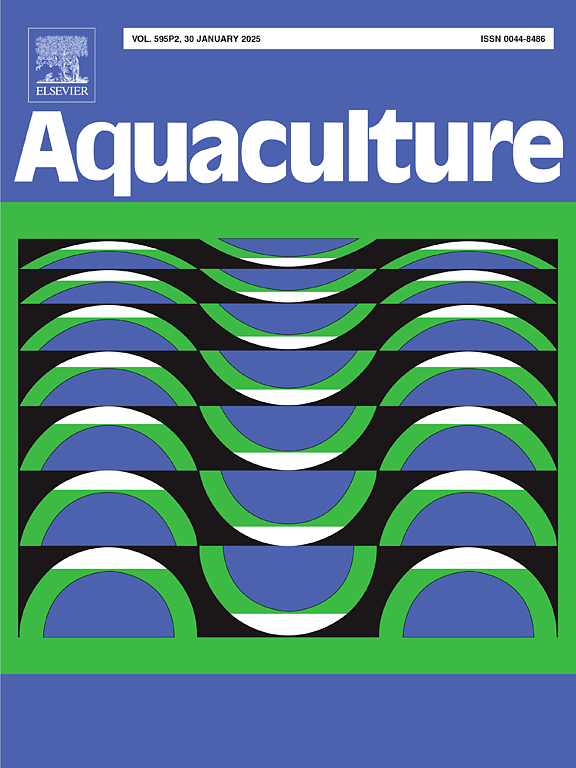复合芽孢杆菌和马齿苋(Sesuvium portulacastrum)提高了水产养殖废水处理效率:微生物群落分布研究的启示
IF 3.9
1区 农林科学
Q1 FISHERIES
引用次数: 0
摘要
本文章由计算机程序翻译,如有差异,请以英文原文为准。

The compound Bacillus and sea purslane (Sesuvium portulacastrum) enhanced aquaculture wastewater treatment efficiency: Insights from a study on microbial community distributions
As the aquaculture industry continues to grow rapidly, the environmental consequences of wastewater discharge from aquaculture have become a major concern. The biological treatment method has proven to be an effective and beneficial approach for wastewater treatment. In this experiment, aquaculture wastewater was treated using two different ratios of Bacillus subtilis and Bacillus licheniformis composites in combination with sea purslane (Sesuvium portulacastrum) to investigate the wastewater treatment efficiency and microbial community. Sea purslane effectively removed nutrients from aquaculture wastewater. The addition of compound Bacillus significantly increased the removal rates of CODMn, TP, and PO43−-P, which were 54.9–56.4 %, 78.2–79.9 %, and 85.0–89.6 %, respectively. Moreover, the compound Bacillus notably influenced the microbial community composition in the water and root systems, reducing species abundance while increasing community diversity, with Treatment 2 exhibiting the highest community stability. The addition of the compound Bacillus significantly increased the relative abundance of Alphaproteobacteria. Most of the important operational taxonomic units (OTUs) that significantly impacted the groups belonged to Alphaproteobacteria. Different biomarkers in the water and root system were primarily from Alphaproteobacteria, Gammaproteobacteria, and Bacteroidia, including Idiomarina and Alteromonas, Ruegeria, Vibrio, Algoriphagus, and Maribacter, among others. These microorganisms play a significant role in promoting the removal rate of nitrogen and phosphorus. Furthermore, the compound Bacillus notably affected the abundance of nitrogen cycle-related sequences and increased the relative abundance of microorganisms associated with the nitrogen cycle. These findings provide valuable insights for optimizing aquaculture wastewater treatment processes.
求助全文
通过发布文献求助,成功后即可免费获取论文全文。
去求助
来源期刊

Aquaculture
农林科学-海洋与淡水生物学
CiteScore
8.60
自引率
17.80%
发文量
1246
审稿时长
56 days
期刊介绍:
Aquaculture is an international journal for the exploration, improvement and management of all freshwater and marine food resources. It publishes novel and innovative research of world-wide interest on farming of aquatic organisms, which includes finfish, mollusks, crustaceans and aquatic plants for human consumption. Research on ornamentals is not a focus of the Journal. Aquaculture only publishes papers with a clear relevance to improving aquaculture practices or a potential application.
 求助内容:
求助内容: 应助结果提醒方式:
应助结果提醒方式:


